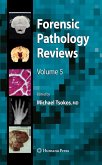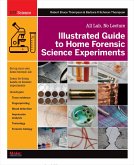Guidelines for Reports by Autopsy Pathologists is intended to help the autopsy pathologist produce reports that communicate well. Having evolved from a coll- tion of faculty critiques of the autopsy reports, summary and opinion reports, scene reports, and death certi?cates produced by residents in anatomic pathology and f- lows in forensic pathology, the book emphasizes topics that have been troublesome for trainees. For clinicians, the medical record describes their work product. For autopsy pathologists, the written report is the work product and demands an acco- ingly higher standard of composition. Most reports produced by pathologists can be divided into objective and subjective elements, or, in other words, ?ndings and opinions. The pathologist must have a clear understanding of the linkage between the two. When composing a report, the autopsy pathologist should serve the goal of c- municating to the parties who will read the report, namely, the case pathologist him- or herself (at a later date), attorneys, the family of the decedent, and other physicians. I believe that careless and imprecise thinking leads to sloppy language, and that sloppy language leads to careless and imprecise thinking. In my experience, pathologists who learn how to clearly express and organize their ?ndings and op- ions in a written format make more detailed and focused observations at the autopsy table.
From the reviews:
"Dr. Adams ... describes how an autopsy report should be organized, what should be included and excluded, how to describe the external and internal examinations, including the proper way to describe wounds and disease states of individual organs, and how to formulate opinions. ... This book would logically seem to be intended for the beginning pathologist, pathology resident or medical student, but should also be included in the library of any autopsy pathologist as a valuable reference." (Douglas Posey, Forensic Science, Medicine, and Pathology, December, 2008)
"This concise manual describes how to write autopsy reports, including how to describe disease and injury, form opinions, and communicate effectively with families and physicians. ... practicing autopsy pathologists and forensic pathologists also will find this an excellent reference to have on hand. ... This is a very useful book for any pathologist performing autopsies ... especially for pathologists in training who are just learning how to report autopsy findings." (Katie L. Dennis, Doody's Review Service, August, 2009)
"Dr. Adams ... describes how an autopsy report should be organized, what should be included and excluded, how to describe the external and internal examinations, including the proper way to describe wounds and disease states of individual organs, and how to formulate opinions. ... This book would logically seem to be intended for the beginning pathologist, pathology resident or medical student, but should also be included in the library of any autopsy pathologist as a valuable reference." (Douglas Posey, Forensic Science, Medicine, and Pathology, December, 2008)
"This concise manual describes how to write autopsy reports, including how to describe disease and injury, form opinions, and communicate effectively with families and physicians. ... practicing autopsy pathologists and forensic pathologists also will find this an excellent reference to have on hand. ... This is a very useful book for any pathologist performing autopsies ... especially for pathologists in training who are just learning how to report autopsy findings." (Katie L. Dennis, Doody's Review Service, August, 2009)








